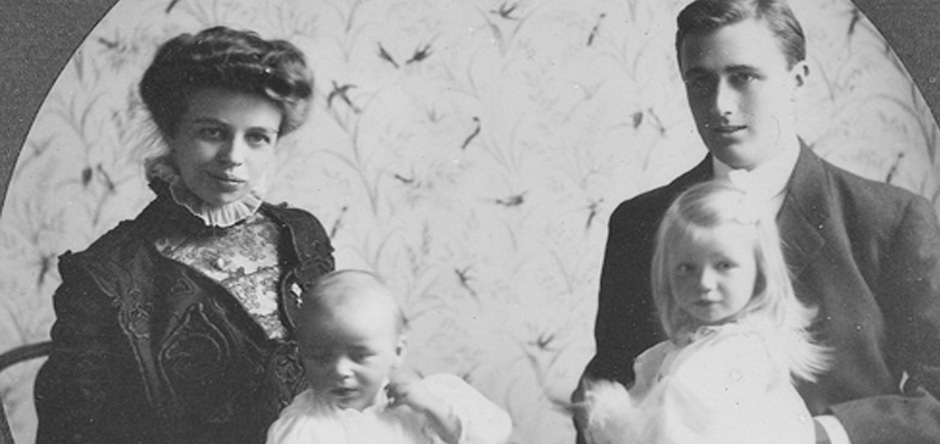What makes a power couple?
Two individuals of accomplishment, who in coming together create the synergy for greater achievement. Singly, they move the world. Together, they shake it to its very core. That has certainly been true of power couples throughout history, many of whom were driven by imperial and dynastic ambitions as well as amour. Traditionally, the keys to these relationships were the women. Men have always had power. But women with land (or its later equivalent, money), allure and, perhaps most important, an education, could hold their own. The women presented here – including a pair of Eleanors (of Aquitaine and Roosevelt) were more than matches for the titans in their lives.
Antony and Cleopatra
Cleopatra, the last Ptolemaic queen of Egypt and its last pharaoh, was fortunate – or unfortunate, as some historians might say – to have been part of two power couples. She was a direct descendent of Ptolemy I, who had been an important general in the army of Alexander the Great and, some whispered, his illegitimate half brother.
The Ptolemies who ruled Egypt for some 300 years were the keepers of Alexander’s golden sarcophagus in the sophisticated port city he founded, Alexandria. As Macedonians, they maintained their Western ways and married within their own family, creating a dynasty of murderous intrigue that extended to Cleopatra and her husband-brother, Ptolemy XIII. That dynasty is the subject of “When the Greeks Ruled Egypt” at the Institute for the Study of the Ancient World in Manhattan through Jan. 4. (isaw.nyu.edu/exhibitions)
Far from being the kittenish or siren-like beauty of Hollywood portrayals, Cleopatra was a striking but by no means conventionally pretty young woman who had been educated like a man. One could while away the night talking with her about everything from astronomy to military history in several languages. She was a true princess of Egypt who was fiercely proud of her Alexandrian heritage, but committed to the welfare and culture of her people. She was not about to share a throne with any kid brother.
Enter Julius Caesar, who knew a thing or two about emerging victorious in a power struggle. She needed strength from Rome – or at least from the right Roman. He needed Egyptian grain. But the Romans – who had a weakness for strong women with stronger profiles – also saw themselves as the metaphorical heirs of Alexander’s imperial ambitions. How could Cleopatra fail to conquer?
When Caesar was assassinated in 44 B.C. – leaving her with a son, Caesarion – she turned her attentions to Marc Antony, a Caesar ally who would become one more Western leader seduced by the East. Antony and Cleopatra had three children – the twins, Alexander Helios and Cleopatra Selene; and another son, Ptolemy Philadelphus – whom they imagined ultimately ruling the eastern half of the Roman Empire. This did not sit well with Caesar’s heir, Octavian, whose sister, Octavia, was also Antony’s wife. In the naval battle at Actium that would settle the clash between East and West, Antony’s forces were defeated after Cleopatra fled and he followed her. They committed suicide – he first, thinking she was already dead – rather than face the wrath of Rome. Octavian, who became the emperor Augustus, dispensed with Caesarion but spared Cleopatra’s children by Antony, who were raised by Octavia.
Historians still dispute the extent to which theirs was more than a political alliance. Still, it seems, they gave up a world for love. Nothing could be more wrong-headed.
Or more romantic.
Henry II of England and Eleanor of Aquitaine
Like Cleopatra, Eleanor was both rich in land and learning, the southern French duchy of Aquitaine being of strategic, agricultural and cultural importance to English and Continental interests. Aquitaine would be the springboard for Eleanor – its duchess from the time she was 12 – to become one of the central figures of the Middle Ages.
And, as in the case of Cleopatra, her homeland would involve Eleanor in two power-couple relationships. The first was a disastrous marriage to King Louis VII of France. Eleanor was high-spirited; Louis, pious – differences in temperament that were only exacerbated by their time together on the unsuccessful Second Crusade to defeat Islam in the Holy Land and by her “failure” to bear Louis the requisite male heir. (They had two daughters, whose custody Louis would retain.)
Another woman might’ve been humiliated, banished or even executed. Not Eleanor. She persuaded Louis and Pope Eugene III to agree to annul the union on the grounds that the pair had too close a blood tie. This would prove ironically amusing when she proposed to her a hot-blooded younger cousin – Henry, duke of Normandy, and soon, Henry II of England – bearing him not one but five sons and three daughters and securing the Plantagenet dynasty, England’s greatest.
Henry and Eleanor ruled England and much of France (she retained control of Aquitaine), extending their Continental influence through their children’s marriages. Theirs, however, was a tempestuous one, rocked by infidelity (his) and rebellion (hers) – as set down in James Goldman’s play and its subsequent movie, “The Lion in Winter.” For inciting their older sons – Henry, the heir; Richard, the legendary “Lionheart” and her favorite; and Geoffrey – to rebel against their father, Eleanor was imprisoned for 16 years.
But if endurance is the ultimate test of a winner, she would have the last laugh – surviving her husband and his successor, Richard, who was often away on military campaigns, leaving his mother to rule in his absence. Indeed, she would survive all of her children, except John, who succeeded Richard to the English throne, and her namesake, Queen Eleanor of Castile.
Wife of two kings and mother of two more, Eleanor presided over a court in Aquitaine that strengthened the idea of courtly love and chivalry, in which women held sway. She was, then, a queen of minds and hearts.
Edward II and Gaveston
Not every power-couple relationship is about a man and a woman. When Alexander the Great conquered the Persian Empire, his childhood soul mate and right-hand man, Hephaistion, was at his side. So close were they that when the captive Persian queen mother, Sisygambis, bowed to Hephaistion, thinking he was Alexander, the Macedonian conqueror, far from being angry, laughed, raised her up and said, “It’s all right, mother, for he, too, is Alexander.” Indeed, the pair – who identified with Achilles and Patroclus in Homer’s “The Iliad” – married sisters, Sisygambis’ granddaughters, and would later die within six months of each other.
Were they lovers? Artists and historians alike are divided, as they are about Piers Gaveston, the first earl of Cornwall, being the lover of Henry and Eleanor’s great-great-grandson, Edward II.
Certainly, Gaveston – a fixture in Edward’s household when he was growing up – was a favorite of the king, who elevated him to the peerage and even appointed him regent when he went to France to marry Princess Isabella.
It should come as no surprise that Isabella and the English nobility were not exactly enamored of Gaveston.
Nor would you be shocked to learn that the quarrelsome Gaveston was ultimately executed for treason by members of that same nobility.
As for Edward, who appears to have been more interested in gardening than governing, he succumbed to a power play by Isabella and her lover, Roger Mortimer, was forced to abdicate and died in prison. He would be avenged by his son, who succeeded him as Edward III.
Queen Victoria and Prince Albert
The power-couple relationship is often one in which the man takes the lead or a marriage of true equals. Rarely is the woman the dominant partner. But such was the case of Queen Victoria and her consort, Prince Albert, and, boy, the Brits never let him forget it.
She was the daughter of the fourth son of George III. He was a first cousin on her German mother’s side. Such a beginning would hardly seem the stuff of an empire stretching to India let alone of legend, but events conspired to bring her to the throne and the two of them together. The future queen was delighted not only by Albert’s handsome countenance and sweetness of expression but, as her diary entry makes clear after their wedding night (Feb. 10, 1840), his ability to satisfy her romantically as well. They would have nine children whose descendants people the royal houses of Europe.
Still, it was rough sledding professionally, as Victoria and Parliament were reluctant to let this duke of Saxony, a foreigner, into the business of ruling England. But as Victoria spent more time pregnant and nursing, neither of which she enjoyed, Albert took over more duties, reorganizing and running the household and family estates, mediating the queen’s difficult relationship with her mother, advocating educational reform and an end to slavery, promoting industry and technology through the Great Exhibition of 1851 and helping Victoria create a moral standard that had become lax in the royal family.
It was not a standard their oldest son, the future Edward VII, shared, and Albert died in 1861, possibly of typhoid fever, not long after a visit to talk some sense into their carousing heir.
Though an upcoming biography by Julie Baird considers the sexual nature of Victoria’s subsequent relationship with her Scottish manservant, John Brown – the subject of the 1997 movie “Mrs. Brown” – she wore black and mourned Albert until the day she died, Jan. 22, 1901, having reigned for almost 64 years, longer than any British monarch or world queen.
Eleanor and Franklin Roosevelt
Like many a historical power couple, the Roosevelts were kissing cousins – fifth cousins, once removed, to be exact – she being the favorite niece of President Theodore Roosevelt, the man FDR admired most in the world. Their complex relationship has been explored in numerous biographies, documentaries and fictional treatments, the most recent being Ken Burns’ can’t-get-enough-of-it “The Roosevelts: An Intimate History.” In that seven-part PBS series, Burns paints a portrait of a brilliantly complementary couple who were nonetheless forever at cross-purposes, thanks to the seeds sown in their childhoods. He used charm and guile not only to steer a frightened nation through two of its greatest crises – the Great Depression and World War II – but to conceal his inner life, particularly from his controlling mother, Sara. She sought to fill the void left by a rejecting mother and an alcoholic father by being useful.
His polio and infidelities spurred her to an independent life lived largely in the political arena, where she would find the purpose she so long sought. Her championing of human rights issues – particularly civil rights – made her a lightning rod for views he secretly held (but wouldn’t voice politically) as well as his eyes, ears and legs all over the world. Yet her driven, serious nature prevented her from providing him with the distracted companionship that he needed to serve as a counterpoint to the pressures of being commander-in-chief.
Burns’ series suggests that they sacrificed themselves – their family, even their very health – in service to the nation. But in so doing, they also gave that nation the quintessential example of a presidential power couple, John and Abigail Adams notwithstanding.
It’s fair to say that without ER and FDR there would have been no John F. and Jacqueline Bouvier Kennedy and no Bill and Hillary Rodham Clinton.





